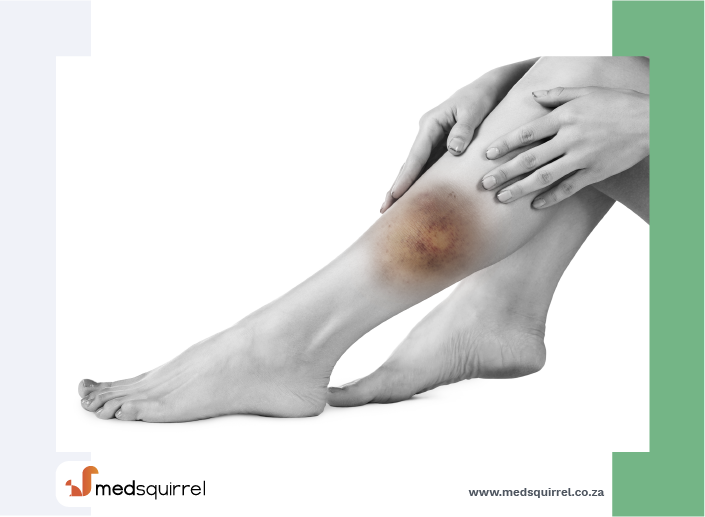First Aid Explained
Disclaimer:
This website is intended to assist with patient education and should not be used as a diagnostic, treatment or prescription service, forum or platform. Always consult your own healthcare practitioner for a more personalised and detailed opinion
Bruise: First aid

We have selected the following expert medical opinion based on its clarity, reliability and accuracy. Credits: Sourced from the Mayo Clinic, Minnesota. Please refer to your own medical practitioner for a final perspective, assessment or evaluation.
Overview
A bruise forms when a blow breaks blood vessels near your skin's surface, allowing a small amount of blood to leak into the tissues under your skin. The trapped blood may cause a bruise that at first looks like a black-and-blue mark and then changes color as it heals.
If your skin isn't broken, you don't need a bandage.
But you can enhance bruise healing with these simple techniques:
- Elevate the injured area.
- Apply an ice pack wrapped in a towel or a cloth dampened with cold water. Do this for about 10 minutes. Repeat several times a day for a day or two after the injury as needed.
- Rest the bruised area, if possible.
- Consider acetaminophen (Tylenol, others) for pain relief, or ibuprofen (Advil, Motrin IB, others) for pain relief and to reduce swelling.
Consult your doctor if you
- Notice very painful swelling in the bruised area
- Are still experiencing pain three days after a seemingly minor injury
- Have frequent, large or painful bruises, particularly if your bruises appear on your trunk, back or face, or seem to develop for no known reasons
- Have easy bruising and a history of significant bleeding, such as during a surgical procedure
- Notice a lump (hematoma) form over the bruise
- Are experiencing abnormal bleeding elsewhere, such as from your nose or gums or in urine or stool
- Suddenly begin bruising, but have no history of bruising
- Have a family history of easy bruising or bleeding
These signs and symptoms may indicate a more serious problem, such as a blood-clotting problem or blood-related disease.
_______________________________________________________________________________________________________________________
Are you a healthcare practitioner who enjoys patient education, interaction and communication?
If so, we invite you to criticise, contribute to or help improve our content. We find that many practicing doctors who regularly communicate with patients develop novel and often highly effective ways to convey complex medical information in a simplified, accurate and compassionate manner.
MedSquirrel is a shared knowledge, collective intelligence digital platform developed to share medical expertise between doctors and patients. We support collaboration, as opposed to competition, between all members of the healthcare profession and are striving towards the provision of peer reviewed, accurate and simplified medical information to patients. Please share your unique communication style, experience and insights with a wider audience of patients, as well as your colleagues, by contributing to our digital platform.
Your contribution will be credited to you and your name, practice and field of interest will be made visible to the world. (Contact us via the orange feed-back button on the right).